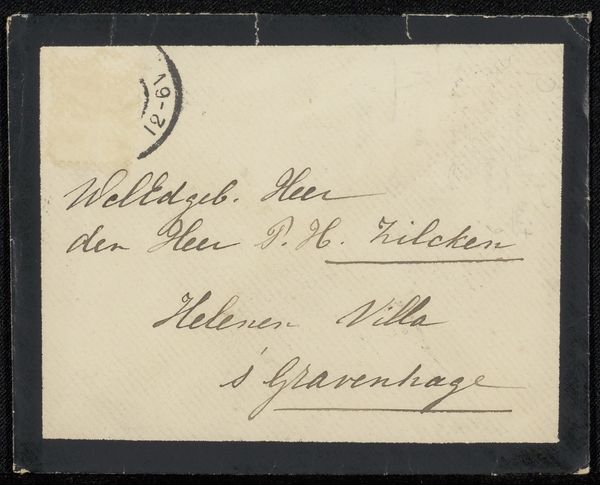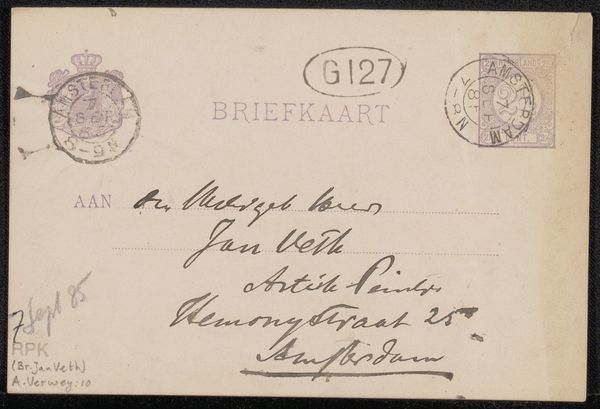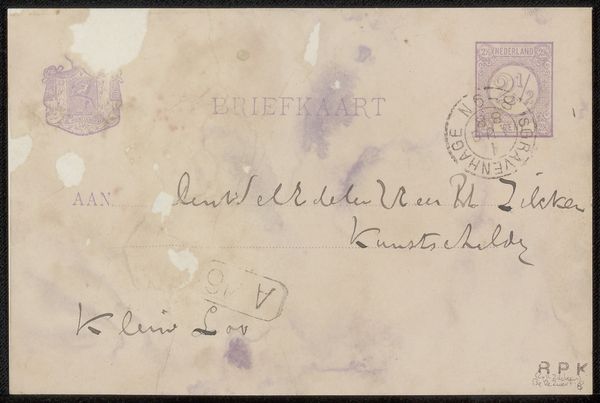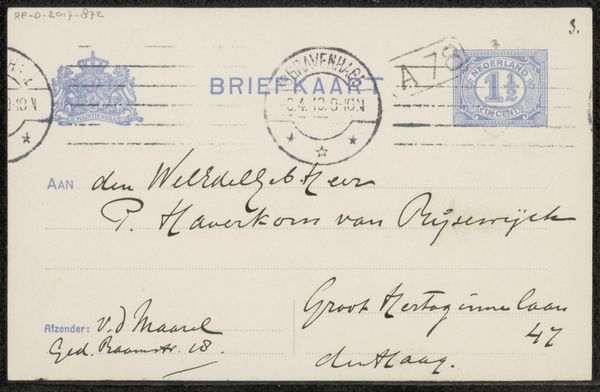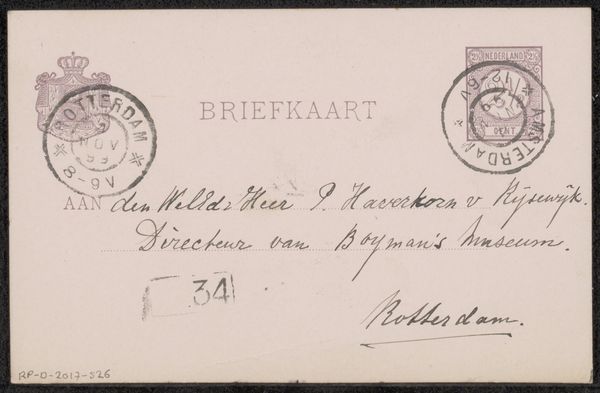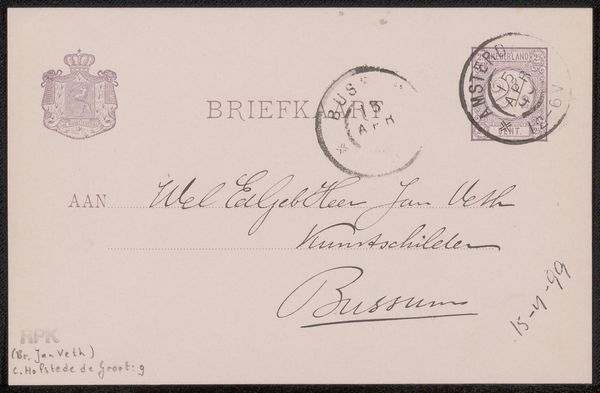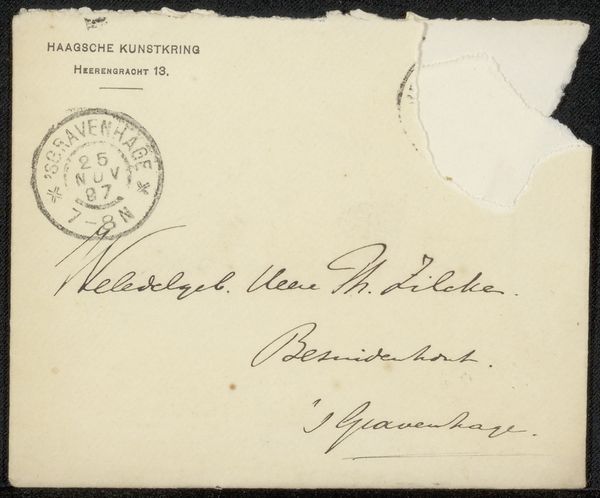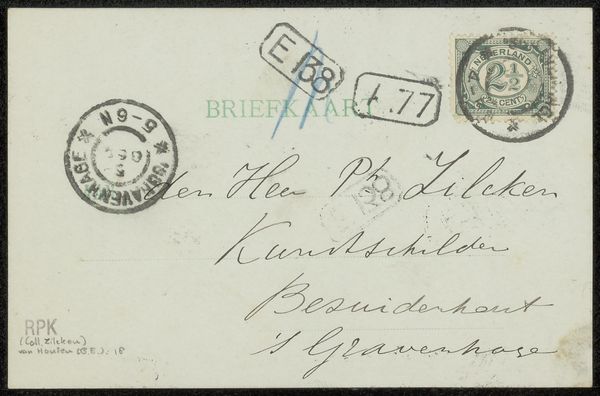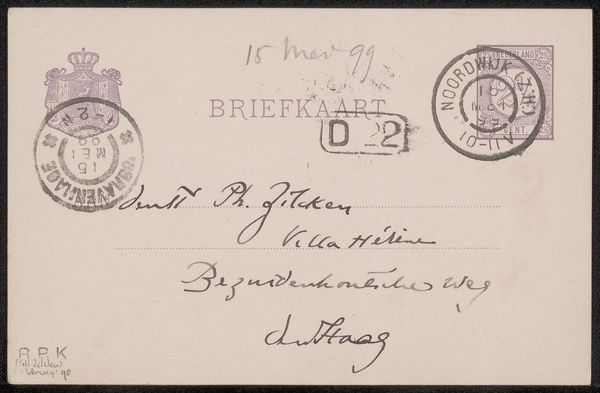
drawing, paper, ink
#
portrait
#
drawing
#
dutch-golden-age
#
paper
#
ink
#
calligraphy
Copyright: Rijks Museum: Open Domain
Editor: This is “Overlijdensbericht aan Philip Zilcken,” or “Death Notice to Philip Zilcken,” created sometime between 1903 and 1925 by an anonymous artist. It’s made with ink on paper and is housed here at the Rijksmuseum. I'm struck by how intimate it feels, seeing this piece of personal correspondence preserved. What jumps out at you? Curator: Immediately, I’m drawn to the materials and the social context surrounding their use. This isn’t just ink and paper; it's a message, a form of communication deeply embedded in the infrastructure of its time. Consider the labor involved: the paper production, ink creation, the postal system’s network. This everyday act was a cog in the much larger machine of early twentieth century society. Notice also the calligraphy itself – is it merely functional, or does it border on being artistic in its own right? Editor: That's fascinating, I never really thought about it that way, as part of a larger "machine." Do you think the sender thought about it in those terms as they sent the letter? Curator: Unlikely in the moment, but we can now see its participation within larger social and economic systems. What about the red stamp? Its presence signifies the intersection of state power, communication technology, and perhaps even notions of national identity expressed in the Netherlands during this period. Each material component—the ink, the paper, the stamp—acted in concert. Editor: I see your point. Thinking about the postal system as a physical network really changes how I view everyday mail. Curator: Exactly. And that relationship to the networks that deliver this letter, what kind of consumption does that encourage? Or maybe we can think of consumption more broadly here: of news, of connection... Editor: It reframes a simple letter into something far more complex, embedded in its time. It is fascinating how an everyday object holds so much about the social context. Curator: Precisely. Examining these material elements encourages a more holistic reading of the artwork and helps to break down established divisions between so-called "high" and "low" culture.
Comments
No comments
Be the first to comment and join the conversation on the ultimate creative platform.
